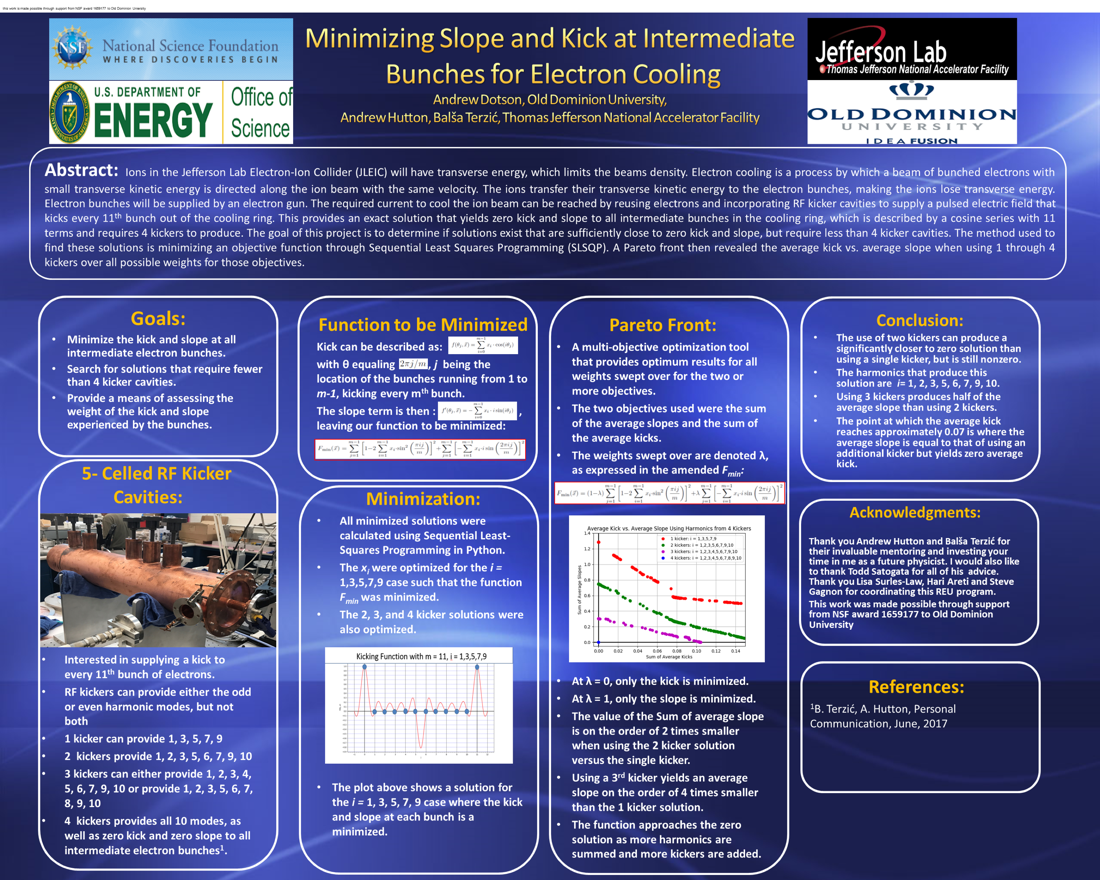Undergraduate Research at Jefferson Lab
Minimizing Kick and Slope at Intermediate Bunches for Electron Cooling
Student: Andrew Dotson
School: Old Dominion University
Mentored By: Andrew Hutton and Balša Terzić
Ions in the Jefferson Lab Electron-Ion Collider (JLEIC) will have transverse energy, which limits the beams density. Electron cooling is a process by which a beam of bunched electrons with small transverse kinetic energy is directed along the ion beam with the same velocity. The ions transfer their transverse kinetic energy to the electron bunches, making the ions lose transverse energy. Electron bunches will be supplied by an electron gun. The required current needed to cool the ion beam can be reached by reusing electrons and incorporating RF kicker cavities to supply a pulsed electric field that kicks every 11th bunch out of the cooling ring. This provides an exact solution that yields zero kick and slope to all intermediate bunches in the cooling ring, which is described by a cosine series with 11 terms. The goal of this project is to determine if solutions exist that are sufficiently close to zero kick and slope, but require less than 4 kicker cavities. The method used to find these solutions is minimizing an objective function through Sequential Least Squares Programming (SLSQP). A Pareto front then demonstrated the average kick vs. average slope when using 1 through 4 kickers.

Citation and linking information
For questions about this page, please contact Education Web Administrator.
